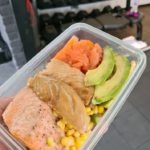Cleanses and detox diets have gained popularity, but their health benefits and safety are subjects of considerable debate. Below is a comprehensive overview of their effectiveness, potential risks, and how to choose the right approach.
Understanding cleanses and detox diets
Cleanses typically involve short-term dietary changes aimed at eliminating toxins from the body. Common methods include:
- Liquid cleanses: These restrict intake to juices, smoothies, or soups.
- Fasting: Complete abstention from food for a specific period.
- Colon cleansing: Using laxatives or enemas to flush the digestive system.
Claims vs. Reality
Many proponents claim that cleanses can:
- Increase energy levels
- Improve digestion
- Aid in weight loss
- Remove toxins from the body
However, scientific evidence supporting these claims is minimal. The body has its own efficient detoxification systems through the liver, kidneys, and intestines.
Most studies on detox diets are small and flawed, showing little long-term benefit beyond initial weight loss due to calorie restriction.
Potential risks of cleanses
While some individuals report feeling better during cleanses, many experience adverse effects such as:
- Fatigue and irritability
- Nutrient deficiencies
- Dehydration
- Gastrointestinal distress (e.g. cramping, diarrhoea).
Certain populations, including pregnant women, children, and those with pre-existing health conditions, should avoid cleanses due to increased risk of complications.
Choosing the right cleanse
If you decide to pursue a cleanse or detox diet, consider the following guidelines:
- Consult a healthcare professional: Especially important for individuals with health issues or those taking medication.
- Focus on nutritional balance: Ensure that any cleanse includes a variety of nutrients, for example:
- Protein additions: Consider adding protein powder or nut butters to smoothies for sustained energy.
- Healthy fats: Incorporate seeds like chia or flaxseeds for omega-3 fatty acids.
- Vitamins and minerals: Use a range of fruits and vegetables to cover micronutrient needs.
- Avoid extreme caloric restriction: This can lead to rebound weight gain and nutritional deficiencies.
- Hydration is key: Drink plenty of water throughout any cleanse to support kidney function and prevent dehydration.
Smoothie recipe
Here is a nutritious smoothie recipe that can be part of a balanced cleanse:
Ingredients
- 1 cup spinach (high in vitamins A and C)
- 1 banana (for potassium)
- 1 tbsp chia seeds (for omega 3s)
- 1 cup almond milk (or any preferred milk)
- Ice cubes (optional)
Instructions
- Combine all ingredients in a blender.
- Blend until smooth.
- Serve immediately for maximum freshness.
Summary
Cleanses may offer temporary benefits but are not necessary for detoxification as the body naturally manages this process. A balanced diet rich in whole foods, regular exercise, and adequate hydration is more effective for long-term health than short-term cleansing regimens. Always prioritise safety and nutritional adequacy when considering any dietary changes.
A personal trainer is an investment in your health and well-being that can lead to long-term positive effects on your fitness, confidence, and overall health. PT Hale prides itself on being a social and safe space where you can workout individually, or with like-minded people to get the results that you want and deserve – LET’S GO!











